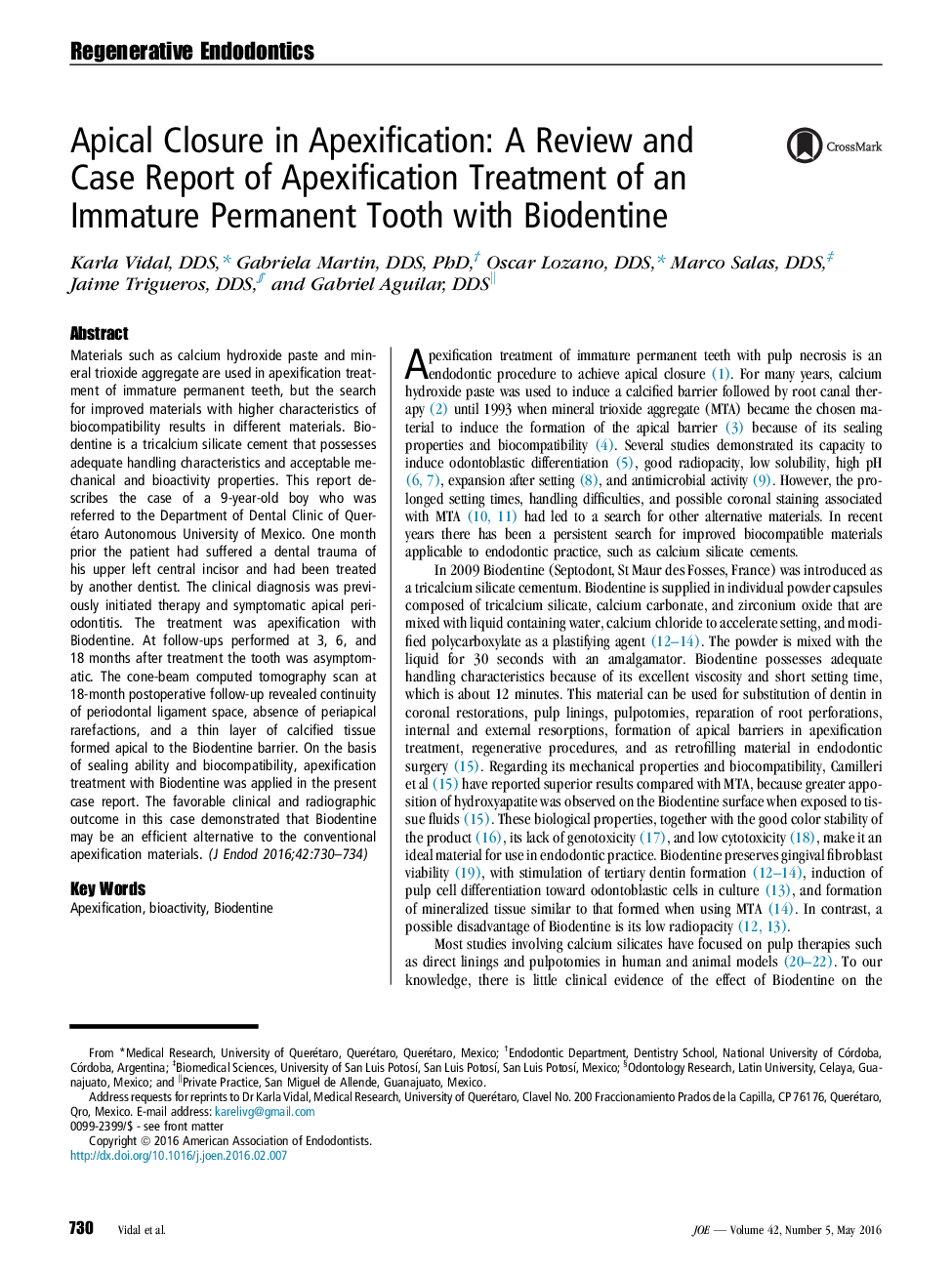| Article ID | Journal | Published Year | Pages | File Type |
|---|---|---|---|---|
| 3147796 | Journal of Endodontics | 2016 | 5 Pages |
Materials such as calcium hydroxide paste and mineral trioxide aggregate are used in apexification treatment of immature permanent teeth, but the search for improved materials with higher characteristics of biocompatibility results in different materials. Biodentine is a tricalcium silicate cement that possesses adequate handling characteristics and acceptable mechanical and bioactivity properties. This report describes the case of a 9-year-old boy who was referred to the Department of Dental Clinic of Querétaro Autonomous University of Mexico. One month prior the patient had suffered a dental trauma of his upper left central incisor and had been treated by another dentist. The clinical diagnosis was previously initiated therapy and symptomatic apical periodontitis. The treatment was apexification with Biodentine. At follow-ups performed at 3, 6, and 18 months after treatment the tooth was asymptomatic. The cone-beam computed tomography scan at 18-month postoperative follow-up revealed continuity of periodontal ligament space, absence of periapical rarefactions, and a thin layer of calcified tissue formed apical to the Biodentine barrier. On the basis of sealing ability and biocompatibility, apexification treatment with Biodentine was applied in the present case report. The favorable clinical and radiographic outcome in this case demonstrated that Biodentine may be an efficient alternative to the conventional apexification materials.
